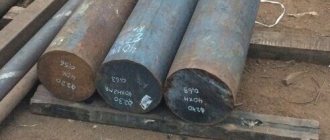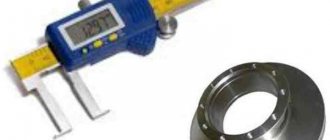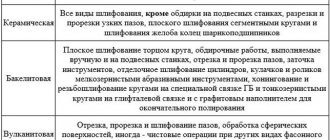Industrial oil I 40 was developed using primitive crude oil distillation technology. However, despite the simplicity of the formula, the lubricant has high performance characteristics, which has become the reason for its widespread use in industrial equipment. The finished liquid is categorized as alloyed lubricants made from sour petroleum. For the consumer, the product is presented as a distillate. Distillation technology involves the use of a selective method of purifying raw materials.
Application area
Oil I 40 is used for servicing production machines, lubrication of guides, lightly, moderately loaded units of helical and spur gears. The formula is used as the main lubricant when servicing mechanisms exposed to natural factors.
Users note its suitability for pouring into engines and gearboxes of passenger cars. Separately, household purposes are highlighted - maintenance of sewing machines, watch mechanisms, lubrication of door hinges, hinges, locks.
There is also a technology for creating complex lubricant mixtures, where I-40 is used as a base.
Important! Operation in highly loaded units is not permitted. The performance characteristics of the lubricant are not designed for critical differences in pressure and temperature, which can cause mechanism failure or breakdown.
How is it different from synthetic oils?
Some of the equipment has open friction pairs designed for systematic lubrication with a correspondingly increased oil consumption.
In general, this creates the prerequisites for the use of cheaper and easier to produce oils.
Moreover, such oils do not contain synthetic components and high-quality additives.
The operation of industrial equipment in rooms with gentle temperature conditions largely eliminates the problem of “all-season” oil, which is typical for transport.
Options
I-40 technical characteristics:
| Index | Meaning |
| Kinematic viscosity at +40˚С | 51-75 |
| Acid index | Up to 0.05 mgKOH/g |
| Ash content | Up to 0.01% |
| Impurity content | 0% |
| Nominal density at +20 ˚С | 0.89 g/cm³ |
| Crystallization threshold ˚С | -15 |
| Flash threshold in an open crucible ˚С | +200 |
| Resin content | 3% |
| Limit operating temperature ˚С | +70 |
Preface
The goals, basic principles and general rules for carrying out work on interstate standardization are established by GOST 1.0 “Interstate standardization system. Basic provisions" and GOST 1.2 "Interstate standardization system. Interstate standards, rules and recommendations for interstate standardization. Rules for the development, adoption, updating and oPetroleum fuels and lubricants", Open Joint Stock Company "All-Russian Scientific Research Institute for Petroleum Refining" (JSC "VNII NP")
2 INTRODUCED by the Federal Agency for Technical Regulation and Metrology
3 ADOPTED by the Interstate Council for Standardization, Metrology and Certification (protocol dated December 10, 2015 N 48)
The following voted for adoption:
| Short name of the country according to MK (ISO 3166) 004-97 | Country code according to MK (ISO 3166) 004-97 | Abbreviated name of the national standardization body |
| Armenia | A.M. | Ministry of Economy of the Republic of Armenia |
| Belarus | BY | State Standard of the Republic of Belarus |
| Kyrgyzstan | KG | Kyrgyzstandard |
| Russia | RU | Rosstandart |
| Tajikistan | T.J. | Tajikstandard |
| Turkmenistan | TM | Main State Service "Turkmenstandartlary" |
(Amendment. IUS N 12-2021).
4 By Order of the Federal Agency for Technical Regulation and Metrology dated December 11, 2015 N 2153-st, the interstate standard GOST 17479.1-2015 was put into effect as a national standard of the Russian Federation from January 1, 2022.
5 This standard complies with the international document SAE J300:2013* “Ground vehicles. Classification of motor oils by viscosity" (“Surface vehicle standard. Engine oil viscosity classification”, NEQ)
________________
* Access to international and foreign documents mentioned in the text can be obtained by contacting the User Support Service. — Note from the database manufacturer.
6 INSTEAD GOST 17479.1-85
7 REPUBLICATION. September 2022
Information on the entry into force (termination) of this standard and amendments to it on the territory of the above states is published in the indexes of national standards published in these states, as well as on the Internet on the websites of the relevant national standardization bodies. In case of revision, modification or cancellation of this standard, the relevant information will be published on the official website of the Interstate Council for Standardization, Metrology and Certification in the catalog “Interstate Standards”
An amendment has been made, published in IUS No. 12, 2022
Amendment made by database manufacturer
Advantages and disadvantages
Among the advantages of I-40 industrial oil, the following factors stand out.
- You can buy I-40 oil at an affordable price.
- Possibility of using a complex formula as a basis.
- Variety of containers - oil is poured into containers starting from 5g. up to 208 liters.
- Compatible with automotive units.
- Wide range of applications.
- Antioxidative stability.
- Resistance to emulsion formation.
- Full compliance with GOST 20799-88.
The disadvantages of I40 include a short service life and a large number of fakes. There is also a low negative operating temperature threshold; for winter operating conditions this is a critical factor.
Note! In 2022, there are a large number of imported analogues on the market. However, all offers are inferior in price to domestic liquids.
Equipment for cleaning and regeneration of industrial oil
To solve this problem, GlobeCore has developed and supplies oil filtration stations of the TsFU-M type and oil mobile stations of the SMM-TsM type. TsFU-M uses thermal vacuum treatment of industrial oil, and SMM-CF uses sorbent treatment.
Using our company’s equipment, you can easily clean your industrial oils from mechanical impurities, water, soot, water-soluble acids and alkalis. Timely maintenance of lubricating oils will significantly extend their service life, while guaranteeing the performance and durability of technological machines and equipment.
ACCEPTANCE
2.1. Industrial oils are taken in batches. A batch is considered to be any quantity of oil produced during a continuous technological process, homogeneous in terms of quality, accompanied by one quality document.
2.2. To check the quality of the oil, acceptance tests are carried out. Sample size - according to GOST 2517.
2.3. If unsatisfactory test results are obtained for at least one of the indicators, repeated tests of a newly selected sample from the same sample are carried out. The results of repeated tests apply to the entire batch.
2.4. Periodic tests for the indicator “Stability against oxidation” may be carried out once a quarter by agreement with the consumer.
If unsatisfactory results of periodic tests are received, the manufacturer transfers the tests for this indicator to the acceptance category until positive results are obtained for at least three batches in a row.
4 Classes of motor oils
4.1 Depending on the temperature limits of performance, motor oils are divided into summer, winter and all-season.
4.2 The main operational parameter for all motor oils is kinematic viscosity, which is determined at temperatures of plus 100°C and minus 18°C.
Depending on the value of kinematic viscosity, motor oils are divided into classes:
— winter oils include oils of viscosity classes 3z, 4z, 5z, 6z, 6, 8;
— summer oils include oils of viscosity classes 10, 12, 14, 16, 20, 24;
- all-season oils include oils whose viscosity class is designated by the fraction - 3з/8; 4z/6; 4z/8, etc. The number in the numerator indicates membership in one of the winter classes, in the denominator - in one of the summer classes. The letter "z" indicates that the oil contains a thickening additive.
4.3 For each viscosity class of motor oils, the limits of kinematic viscosity at a temperature of plus 100°C are indicated. Kinematic viscosity at a temperature of minus 18°C is normalized for winter and all-season motor oils.
Table 1 shows the viscosity classes of motor oils and kinematic viscosity values at temperatures of plus 100°C and minus 18°C.
Table 1 - Motor oil viscosity classes
| Viscosity grade | Kinematic viscosity, mm/s (cSt), at temperature | |
| plus 100°С | minus 18°С, no more | |
| 3z | Not less than 3.8 | 1250 |
| 4z | Not less than 4.1 | 2600 |
| 5z | Not less than 5.6 | 6000 |
| 6z | Not less than 5.6 | 10400 |
| 6 | St. 5.6 to 7.0 incl. | — |
| 8 | St. 7.0 to 9.3 incl. | — |
| 10 | St. 9.3 to 11.5 inclusive. | — |
| 12 | St. 11.5 to 12.5 inclusive. | — |
| 14 | St. 12.5 to 14.5 inclusive. | — |
| 16 | St. 14.5 to 16.3 inclusive. | — |
| 20 | St. 16.3 to 21.9 inclusive. | — |
| 24 | St. 21.9 to 26.1 incl. | — |
| 3z/8 | St. 7.0 to 9.3 incl. | 1250 |
| 4z/6 | St. 5.6 to 7.0 incl. | 2600 |
| 5z/10 | St. 9.3 to 11.5 inclusive. | 6000 |
| 5z/12 | St. 11.5 to 12.5 inclusive. | 6000 |
| 5z/14 | St. 12.5 to 14.5 inclusive. | 6000 |
| 6z/10 | St. 9.3 to 11.5 inclusive. | 10400 |
| 6z/14 | St. 12.5 to 14.5 inclusive. | 10400 |
| 6z/16 | St. 14.5 to 16.3 inclusive. | 10400 |
Note - When determining the class of motor oils in accordance with the SAE J 300:2013 classification, Table A.1, Appendix A should be used. Approximate correspondence of the viscosity classes of motor oils according to this SAE J 300:2013 classification standard is given in Table A.2, Appendix A .
Other GOSTs
GOST IEC 61198-2014 Insulating petroleum oils. Methods for determination of 2-furfural and related compounds GOST R IEC 60666-2013 Petroleum insulating oils. Detection and determination of installed additives GOST IEC 60666-2014 Petroleum insulating oils. Detection and determination of installed additives GOST 13003-88 Insulating oils. Method for determining gas resistance in an electric field GOST R 55494-2013 Insulating oils. Detection of corrosive sulfur. Silver strip test GOST 33254-2015 Insulating oils. Detection of corrosive sulfur. Silver strip test GOST 20799-75 General purpose industrial oils. Technical specifications GOST R 51634-2000 Automotive motor oils. General technical requirements GOST 6457-66 Oils MK-8. Technical specifications GOST 28640-90 Mineral electrical insulating oils. Method for determination of aromatic hydrocarbons GOST 32852-2014 Cosmetic oils. General technical conditions GOST 1861-73 Compressor oils. Technical specifications GOST 30142-94 Coal oils. Method for determining the mass fraction of phenol GOST 30141-94 Coal oils. Gas chromatographic method for determining the main component composition
Hydraulic oils
MGE46V is used for components and mechanisms of agricultural machinery, tractors, combines, operating at a stable pressure of 35 MPa and increasing to 42 MPa. Operating temperatures range from 10 to 80 degrees.
MGE10A – for hydraulics of ground equipment at operating temperatures from -60 to +79 degrees.
GT50 – for lubricating the hydraulic transmission of diesel trains and turbocharged gearboxes.
ESh - for hydraulic mechanisms and highly loaded units, such as excavators and similar equipment.
Functions of hydraulic oils
The compositions are in demand for production equipment, automobile transport, mobile systems, marine and aerospace equipment. Accordingly, working lubricants must have the following functions:
- transfer hydraulic energy through the circuit to mechanical parts;
- lubricate hydraulic parts to reduce friction and mechanical wear;
- protect systems from corrosive effects;
- cool systems with hydraulic mechanisms;
- stabilize temperature, reduce humidity and provide conditions for operation;
- separate water, undergo filtration purification and separation;
- have hydrolytic stability.
Oils should not:
- create sludge, solid and insoluble sediment particles in the system circuit;
- foam and react with water.
According to the international classification, operating oils are usually divided into 3 types:
- water-glycol;
- oil;
- synthetic.
The main part is produced from purified industrial liquids obtained by petroleum refining with hydrocatalytic and extraction purification. To stabilize physical, chemical and operating parameters, additives are added to hydraulic lubricants.
Properties and characteristics
The use of hydraulic oils is carried out according to temperature conditions.
Filtration cleaning and removal of deposits. The presence of solid particles in hydraulics will cause wear and deformation of the system. To remove solid deposits, it is recommended to use filters.
When moisture penetrates, parts begin to oxidize, resulting in the formation of slag and deposits. Thus, the filter mechanisms become clogged and the operation of the system is disrupted. To reduce the amount of deposits and solids in fluids, experts use dispersants and additives. These additives are capable of holding contaminants by dissolving them into suspension. Demulsifiers are used to break down and reduce water in hydraulic oil.
Foaming level. If the hydraulic oil begins to foam, then circulation in the system is disrupted, oxidation of parts and mechanisms occurs, thermal conductivity properties decrease, which ultimately leads to wear and overheating of the system. Foam is formed due to the operation of mechanisms at increased speeds, as a result of which the lubricant circulation rate increases. To reduce foaming, experts use chemical additives. Additives reduce the surface tension of air in the foam and therefore its layers begin to split and collapse.
TEST METHODS
3.1. Sampling - according to GOST 2517.
3.2. The stability of oils against oxidation is determined according to GOST 18136 under the following conditions: temperature (100 ± 0.5) °C; test time 40 hours; air supply speed 5 dm3/h; catalyst - copper grade M0 according to GOST 859.
(Changed edition, Amendment No. 1).
3.3. (Deleted, Amendment No. 4).
3.4. When determining the increment of resins after oxidation, the mass of a sample of oil is 1 g.
(Introduced
additionally, Amendment No. 1 ).
Where is it used?
Technical characteristics suggest a wide range of components and assemblies. The main application of this product is anti-friction.
- gear and chain reducers with low and medium load levels: with strong pressure on the mating surfaces, the lubricant is squeezed out of the contact zone;
- gears in mechanical boxes of machine tools and other equipment (except for automobile gearboxes);
- sliding units: slides, guides;
- rolling units: rail and profiled guides for roller platforms with medium weight.
Additional application: hydraulics.
- subject to the technical requirements of equipment manufacturers, the use of I-40A oils in control hydraulic cylinders is allowed;
- use in power hydraulic systems is permitted only if the tolerances for mechanical destruction of the lubricant composition are met.
2 Normative references
This standard uses normative references to the following interstate standards:
GOST 33 Petroleum products. Transparent and opaque liquids. Determination of kinematic viscosity and calculation of dynamic viscosity
________________
In the Russian Federation, GOST 33-2016 “Oil and petroleum products. Transparent and opaque liquids. Determination of kinematic and dynamic viscosity".
GOST 20303 Motor oils. Method for assessing cleaning properties using the IM-1 installation
GOST 20457 Motor oils. Method for assessing antioxidant properties using an ICM installation
GOST 20991 Motor oils. Method for assessing the tendency of oils to form deposits at high temperatures
GOST 20994 Motor oils. Method for assessing the tendency of oils to form deposits at low temperatures
GOST 33111 Motor oils. Method for determining apparent viscosity in the temperature range from minus 5°C to minus 35°C using a cold rolling simulator
GOST 33155 Motor oils. Method for determining yield strength and apparent viscosity at low temperature
Note - When using this standard, it is advisable to check the validity of reference standards and classifiers on the official website of the Interstate Council for Standardization, Metrology and Certification (www.easc.by) or according to the indexes of national standards published in the states specified in the preface, or on official websites of the relevant national standardization bodies. If an undated reference is given to a document, then the current document should be used, taking into account all changes made to it. If a referenced document to which a dated reference is given is replaced, the specified version of that document should be used. If, after the adoption of this standard, a change is made to the referenced document to which a dated reference is made that affects the referenced provision, that provision shall apply without regard to that change. If the reference document is canceled without replacement, then the provision in which a reference to it is given applies to the part that does not affect this reference.








